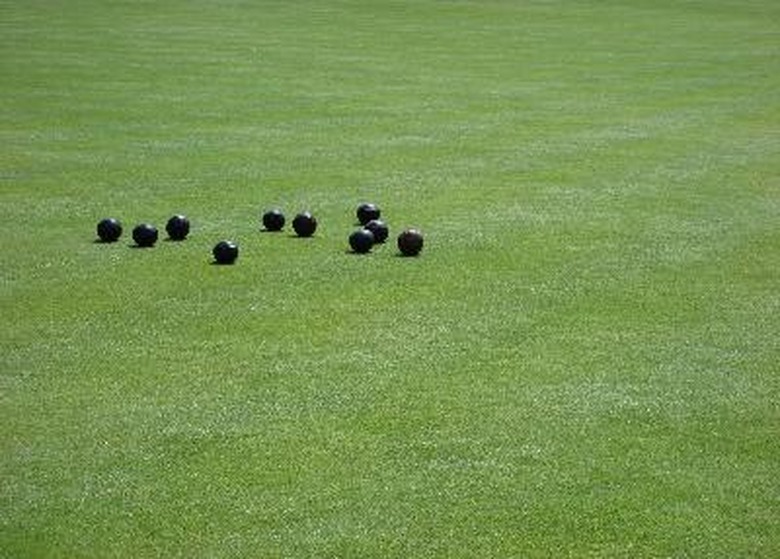Rolling Lawn Aerator Vs. Tiller For New Lawns
Ordinarily, aeration is required only on older, compacted or heavily thatched lawns, but newer lawns may need to be aerated if they are growing on clay or are subject to heavy traffic. In recent years, manufacturers have been marketing aeration attachments that fit onto a tiller; these are designed to replace heavy, expensive rolling lawn aerators.
Rolling Aerators
Traditional rolling lawn aerators are self-propelled or they are pushed or pulled by garden tractors. Self-propelled models are ordinarily heavier and so are more effective. Weight may often be added to pull-behind aerators. Many models are similar to lawn mowers and are designed to maneuver around obstacles and corners; some models have power-lifts so that the operator does not have to lift the rolling drums by hand; still other models carry the operator.
Rolling lawn aerators are usually heavy, with weight sometimes gained by adding water to a drum. The heavy weight of rolling aerators helps push tines deeply into the soil and smooth the surface of the lawn.
- Ordinarily, aeration is required only on older, compacted or heavily thatched lawns, but newer lawns may need to be aerated if they are growing on clay or are subject to heavy traffic.
- Rolling lawn aerators are usually heavy, with weight sometimes gained by adding water to a drum.
Tiller Aerator Attachments
Aerators attached to the front of tillers often have heavy cast-iron rollers to improve the penetration of their tines and help groom the lawn, but they still usually weigh less than most rolling aerators. However, their manufacturers say the same amount of weight is applied to each tine, and the tines are designed to penetrate equally deep. While heavy rolling aerators may be better for older lawns that are heavily compacted or have thick layers of thatch, a tiller attachment may suffice for a newer lawn.
Cost Comparison
Having an aerator attachment that fits onto your tiller means that you do not have to buy a separate, usually more expensive roller aerator or hire a professional to roll your lawn. Lawn aeration services can be expensive, and since lawns are best aerated after at least 1 inch of rain, rolling aerators for rent are often unavailable because of heavy demand.
Labor Comparison
Most rolling lawn aerators have 24 tines to remove spikes of soil from the lawn. Aerators that fit on the front of tillers have fewer tines, so from two to four passes must be made over an area to get the same aeration benefit. Rolling lawn aerators are often very heavy, and handling them requires strength and vigor. Aerator attachments generally require less physical labor than heavier rolling aerators.
- Aerators attached to the front of tillers often have heavy cast-iron rollers to improve the penetration of their tines and help groom the lawn, but they still usually weigh less than most rolling aerators.
- Aerators that fit on the front of tillers have fewer tines, so from two to four passes must be made over an area to get the same aeration benefit.
Tips
Some aerators have tines that pull ½-inch to ¾-inch cores of soil from the lawn; others drive solid spikes into the ground without removing soil. Whether you have a rolling aerator or one that fits as an attachment onto a tiller, agronomists at the Virginia Cooperative Extension say that it should remove cores of soil from your lawn and that aerators that merely drive spikes into the lawn can increase soil compaction.
